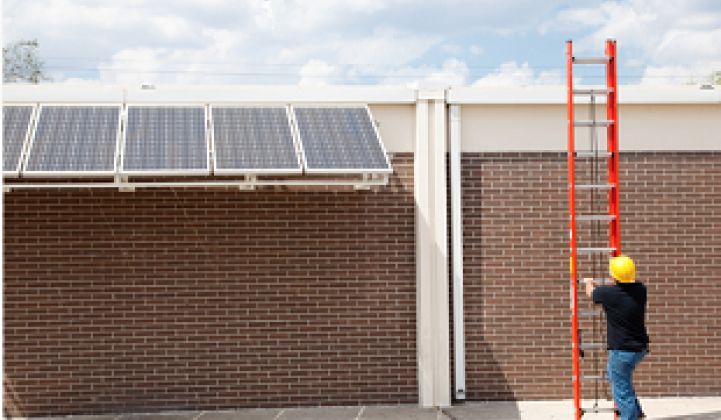GTM Research recently predicted a revival of small commercial solar projects -- and we should all hope that happens. With about 5.6 million commercial buildings in the U.S., nearly 75 percent of them measuring 10,000 square feet or less, we are looking at a massive opportunity to increase renewable energy generation and reduce greenhouse gas emissions from building operations.
Yet without market-savvy incentive programs and a more holistic approach to energy upgrades, it’s going to be difficult to reverse the slide in small commercial solar installations (less than 1 megawatt). I work at a bank that actively seeks to fund small-scale commercial solar projects, but many of those we see just don’t pencil out.
A major factor is the expiration of the 1603 Treasury Program, a stimulus initiative that reimbursed up to 30 percent of the cost of a renewable energy installation, in lieu of tax credits, when it went into service. The program spurred small commercial solar installations because it reduced the equity required to fund development. The reality is that small projects don’t appeal to the tax equity investors who typically fund large-scale commercial solar. And commercial real estate loans, the traditional source of financing for building improvements, don’t make sense, because a solar project isn’t large enough to justify the costs of refinancing the building.
The loss of the Treasury program means small commercial solar developers with minimal equity to put into projects are seeking long-term debt financing based on projected energy savings, with no tangible collateral -- and that is a very tough underwriting situation unlikely to yield many loans.
Practical measures would provide relief
A couple of practical improvements could make financing at least marginally easier right away. One is standardized documentation, which would greatly reduce transaction costs for small projects. The technical aspects of small commercial projects are similar, but if you look at contracts for such projects, they typically use unique language authored by individual legal firms. That makes these deals more difficult to evaluate and complex to process, reducing financing opportunities. Another improvement would be to provide a more accessible, comprehensive information source on the incentives that still exist. We see underuse of USDA, SBA and California guaranty and incentive programs, because finding and understanding them is a daunting challenge to small-scale developers.
Meaningful expansion of small-scale commercial solar, however, may require a change in approach. By combining an entire suite of energy efficiency measures with solar generation, we could optimize both the building energy profile and the financing for it. As an example of how this would work, our financing for Metrus Energy’s $5.8 million energy upgrade at Kuakini Medical Center in Honolulu included a new central cooling and heating plant, lighting upgrades, and energy management and control systems. The hospital signed an efficiency services agreement (similar to a PPA) that pays Metrus a percentage of the savings each month until the end of the ESA term, and the bank’s risk was mitigated through a bond and insurance.
That project didn’t include solar -- but it could have. Bundling solar installation with energy efficiency measures to create a full building energy upgrade would allow the short payback period of upfits such as LED lighting to balance a solar system’s longer payback period. It might even open the door to a larger commercial real estate refinancing, and, depending on the incentives involved, the project might have appeal for tax equity investors.
What kind of incentive would spur such projects? At a minimum, California and other states should follow the lead of Massachusetts and New York and create incentive programs targeted specifically at increasing small commercial solar installations. Even better, public policy should look at the big picture and consider commercial building energy as a whole, providing incentives for long-term thinking rather than short-term returns. We see too many requests for projects that fund only the lighting upgrades and other quick-payback items, leaving the potential for major building energy upgrades and alternative energy production, like solar power, unfulfilled. An incentive structure that takes a holistic approach to energy upgrades could go a long way toward changing this calculus.
***
Bill Peterson is chief credit officer at New Resource Bank in San Francisco.



